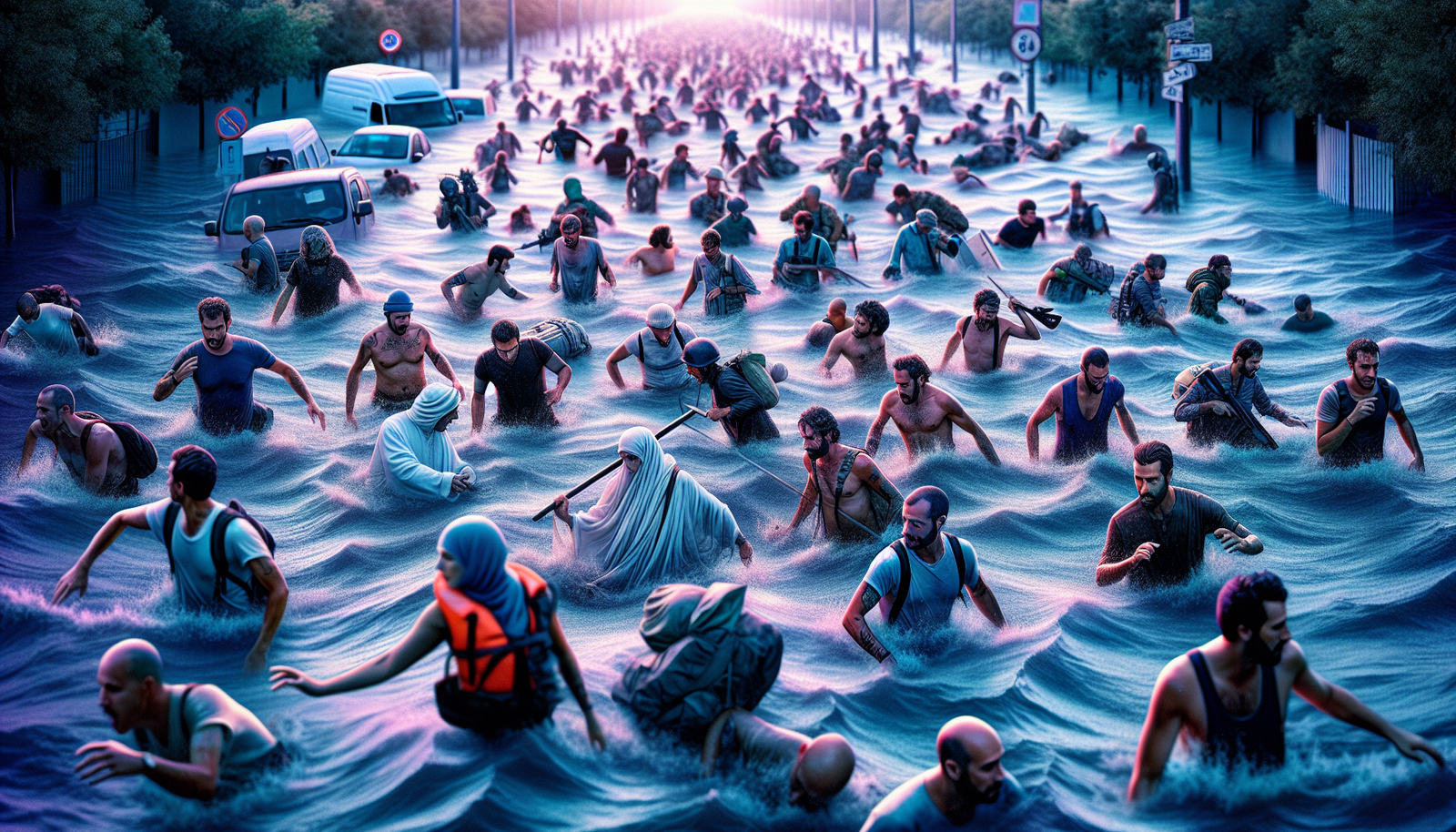The recent floods in Spain have revealed the scale of a devastating climate disaster. The striking images, often interpreted as creations by artificial intelligence, bear witness to a human tragedy. The confusion between *authentic photographs* and *digital productions* illustrates a major challenge in the face of misinformation. The gravity of the events highlights a reality often ignored: the psychological impact of the floods on the victims. The media hysteria hinders a clear appreciation of the facts. *Photographs denounce the extent of the destruction* caused by torrential rains, calling for increased vigilance. Numbers are no longer sufficient to account for the horror experienced.
Devastating floods in Spain
Recent floods in the Valencia region have caused considerable damage. The torrential rains, dubbed “rain bombs,” dropped the equivalent of a year’s worth of precipitation in just 24 hours. This extreme weather phenomenon resulted in the deaths of nearly 158 people and left thousands of homes devastated.
Authentic images and misinformation
The visual impact of these events has circulated widely on social media. A striking photograph of a street in Valencia, showing vehicles scattered in an alarming chaos, has captured public attention. Despite its authenticity, several internet users quickly raised doubts, claiming it was a creation by artificial intelligence.
Why this confusion?
This distrust towards authentic images may result from the proliferation of creations generated by AI algorithms. Many users, both on Facebook and Instagram, are confronted with a constant stream of images and texts that they suspect to be fakes. The rise of what is termed “AI slop” contributes to erroneous perceptions of real photos, making them sometimes difficult to distinguish.
The role of social media platforms
Companies like Meta have integrated AI-generated content into their engagement-creation strategies. Thus, Mark Zuckerberg mentioned the introduction of new feeds including AI-generated content. The commercialization of this content, often in the absence of rigorous checks, exacerbates the risks of confusion among users.
Worrying consequences
The consequences of this phenomenon go beyond mere visual misunderstandings. Individuals, faced with an avalanche of fictitious images, develop a form of desensitization to reality. This situation risks fueling a general skepticism towards real tragic events, such as the floods affecting Spain.
The need for verified information
Narratives of catastrophic climate events must be accompanied by rigorous verification. In this age of informational uncertainties, it becomes essential to ensure that the images circulating are authentic, especially when depicting such tragedies. The media has a responsibility to educate and raise awareness among the public about the dangers of non-critical information consumption.
A look towards the future
The situation in Spain highlights the urgency of developing reliable tools to manage and recognize the authenticity of images. A collective approach is imperative to protect the veracity of information and prevent a tragedy from being minimized or misinterpreted.
Climate issues, like those revealed by this disaster, must constantly be accompanied by expertise to ensure a fair representation of the facts. The floods, symbols of a growing environmental crisis, require our diligence to better understand their reality and impacts.
For more information on these climate issues, visit the link on artificial intelligence and climate forecasting. For perspectives on misinformation, read the floods in Spain and their misinterpretation. Finally, for information on the reopening of Orlando parks, check this article on Orlando and Hurricane Milton.
Frequently Asked Questions
What is the main cause of the recent floods in Spain?
The floods in Spain, particularly in the Valencia region, result from torrential rains, sometimes referred to as “rain bombs,” where a year’s worth of precipitation is recorded in a single day.
Why are images of the floods often perceived as creations by artificial intelligence?
The images of the floods may seem too surreal or perfectly clear, prompting people to think they were generated by AI tools rather than being authentic photographs.
How can one distinguish a real flood photo from an AI-generated image?
It is crucial to verify the sources of the images, including the identity of the photographers, official publications, and the authenticity of the depicted locations, to ensure their validity.
What impact does misinformation have on perceptions of climate events in Spain?
Misinformation can lead to distrust towards visual evidence of natural disasters, resulting in apathy towards urgent environmental issues such as climate change.
Are the floods in Spain linked to climate change?
Yes, experts state that climate change increases the frequency and intensity of extreme weather events, including floods.
What are ways to raise public awareness about the reality of floods?
Awareness can be raised through information campaigns, community initiatives, and education on the importance of reliable information sources regarding environmental events.
How can the public verify the authenticity of flood images shared on social media?
Users can use reverse image search tools, examine image metadata, and consult reliable news sources to confirm authenticity.
What are the direct consequences of the floods on affected communities?
The consequences include loss of life, material destruction, disruption of essential services, and significant economic impact on affected regions.






